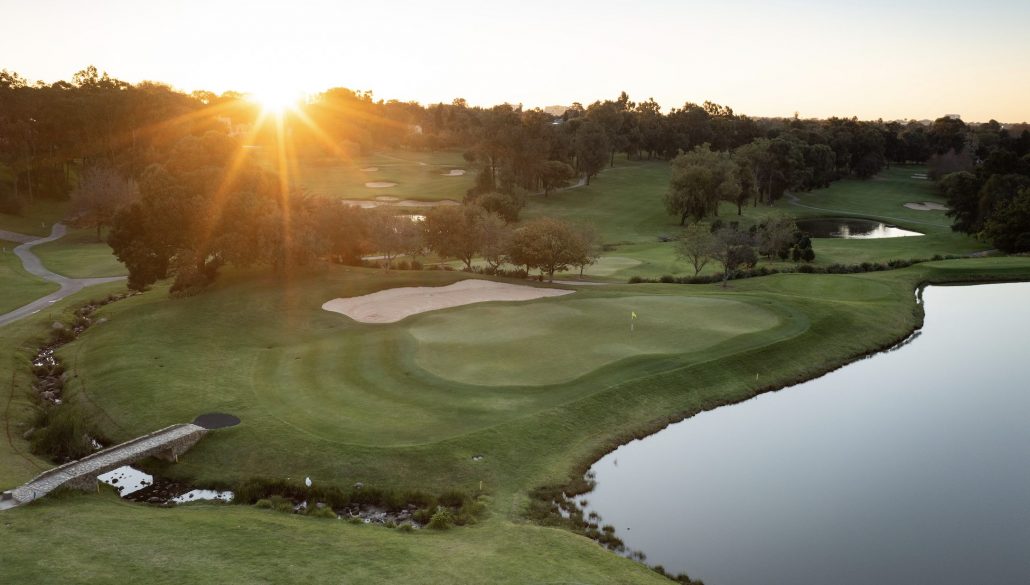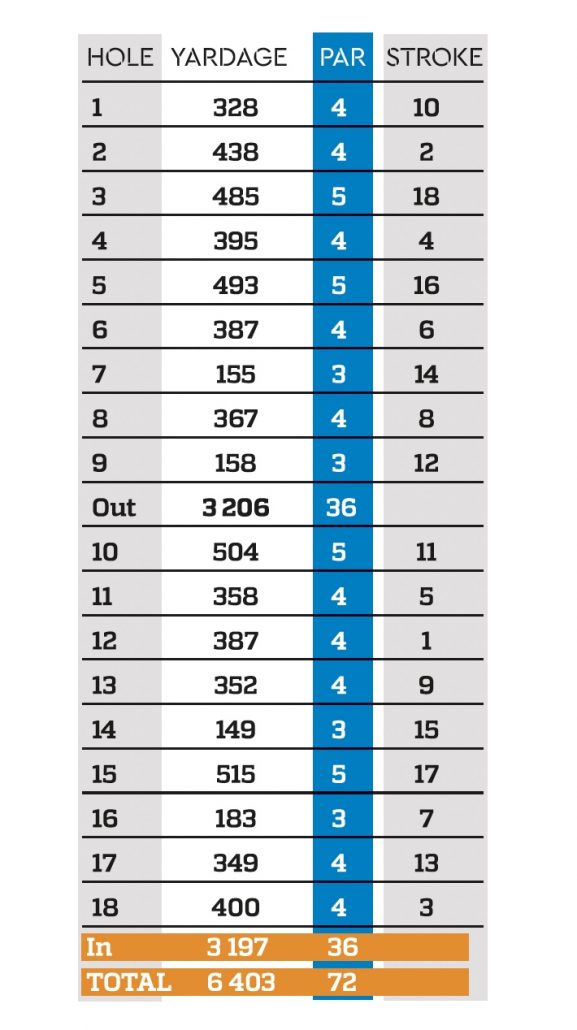Not content to merely follow the crowd, Houghton Golf Club has its finger on the pulse, writes MARK SAMPSON.
For decades the business of golf courses offering just a round of golf has been evolving and morphing. Long before Covid times, management realised that they were not only offering a round of golf but an experience prior to, and long after the round of golf was complete.
Courses upgraded their facilities and those with additional space and budget noted the gap in the market and improved their offering to conference, dining and, in recent times, even padel tennis. Yes, if you have not heard, it is the sport taking the world, and South Africa, by storm, specifically targeting golf courses due to the space available and the added health option of a quick hour of chasing a somewhat larger ball around a small court.
One such course with its finger on the pulse of the golf-playing market is Houghton Golf Club in Johannesburg.
The modern clubhouse at the epicentre of the course forms the hive of activity as well as the economic sustainability of the club. In essence it is a three-storey building including underground parking, the main level with admin offices, pro shop, conference facilities, a large function lounge, changing rooms, bar and dining area all overlooking the course and the sunset.
A recent addition to the outside area is a children’s play area, two padel tennis courts and a small shop, drinks area combination to complete an active family outdoor space.
The top floor is a large function space with spectacular views of the course and the treelined suburbia in the surrounding area.
In terms of golf, the practice facilities at Houghton are excellent. Both grass and mats are available on the range as well as a chipping and putting area.
The clubhouse is undoubtably the heart and soul of the course and always a buzz of activity whether it be a golf day, conference or evening function taking place. As far as clubhouses go, it is by far one of the most impressive you will find on a South African course.
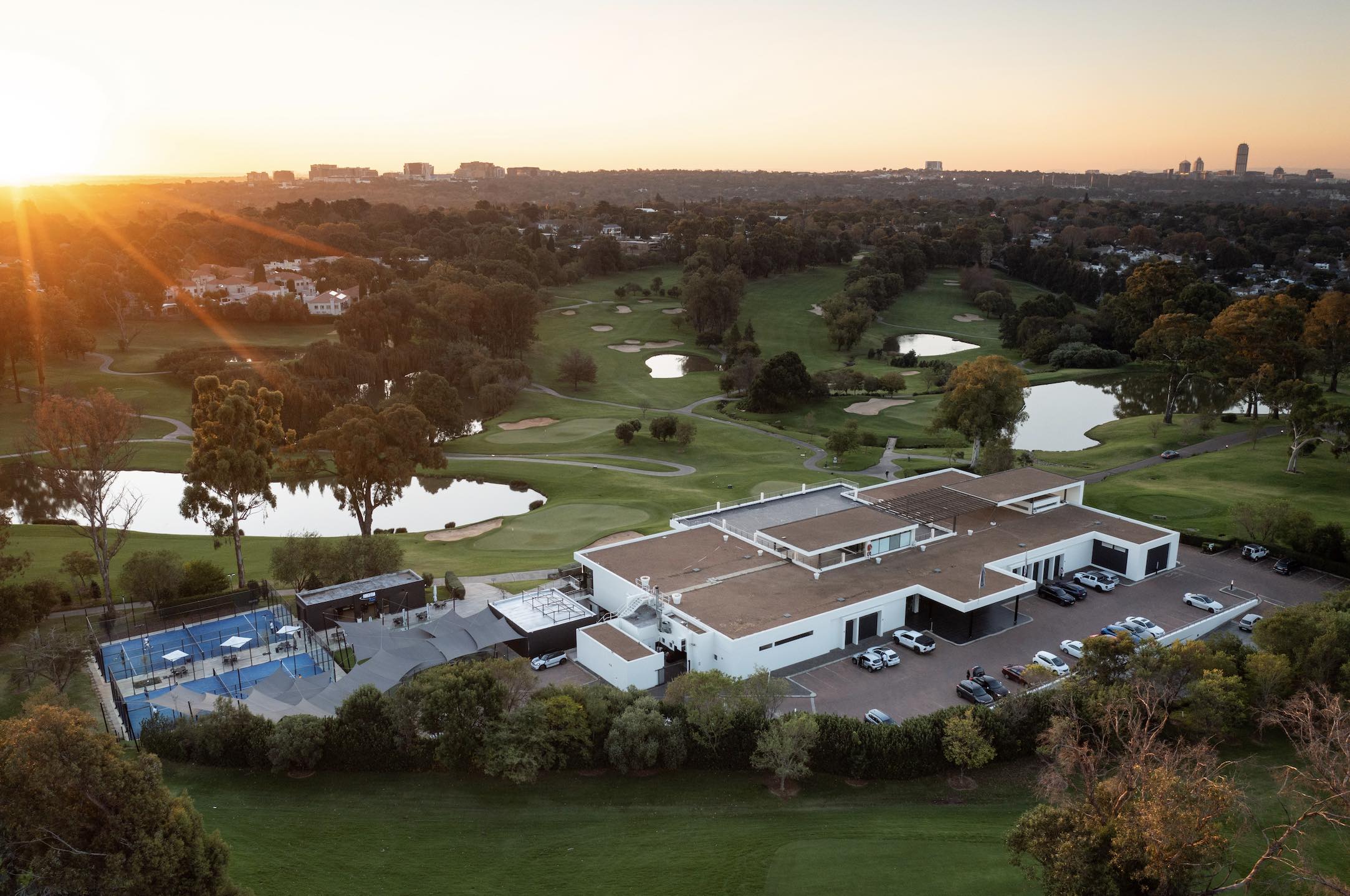
The golf course is a typical parkland course with fairways protected by large mature trees.
The course was originally designed by the then club professional A Copeland in 1926. Like many courses in the greater Gauteng region, it is steeped in history, having held numerous tournaments through the years including eight SA Opens. It also boasts golfing icon and golf course designer Sid Brews, who was the resident pro for 35 years.
In 2009, the course underwent a major facelift at the hands of the Jack Nicklaus design group that created a devilish layout which, although short, had protection aplenty with bunkers, water hazards and large greens with strong contouring.
In more recent times, some major aesthetic changes were made to the course with the most notable being the semi-island green created for the stroke-one, par-four 12th hole. After completion in 2018 the green was raised slightly at the back due to not having a major backstop to prevent balls from finding a watery grave. It is now complete and one of the most picturesque, yet hardest holes on the course. It is also the signature hole (see below).
This was followed by a change to the bunkering to make them more aesthetically pleasing and easier to maintain. In the original design they had a more ragged links-like look that did not quite fit the rest of the course and management undertook to smooth out edging and refine locations.
The course is not long off the club tees at 6,403m and the thin Highveld air allows for further ball flight. That said, it is no easy pushover and with the ample bunkering and greens that can be speeded up to well over 11 on the Stimpmeter, it can still present well at tournament level. The most recent of which was the Joburg Open hosted in November 2022 with a winning score of 21 under by England’s Dan Bradbury.
For your average golfer it is a challenge to find fairways and avoid the numerous bunkers and water hazards. Club selection also plays a big part on your approach shot to the greens due to the sloping nature of the land on which the course was designed.
Interestingly, the land was given to the course and was previously used for growing trees for use in the mining industry.
The round starts with an easy par four of only 328m. It’s all in the tee shot and if the bunkers right can be avoided it makes for a potential birdie opportunity.
In contrast, the 2nd, also a par four, is 110m longer and slightly uphill. The raised green, surface sloping from back to front, makes for a difficult target with long-iron in hand. Finding it does not guarantee a par.
The 485m par-five 3rd is a stunning downhill hole taking you back towards the clubhouse. It’s a dogleg sliding from right to left with a well-placed bunker to avoid from the tee.
Greenside is where most of the danger awaits. With a small creek winding across the face of the green and two bunkers middle and right of the surface, it has ample protection. It is reachable in two as the hole descends from tee to green but a mis-hit approach will most likely end up in trouble.
This is a strong contender for the prettiest hole on the course.
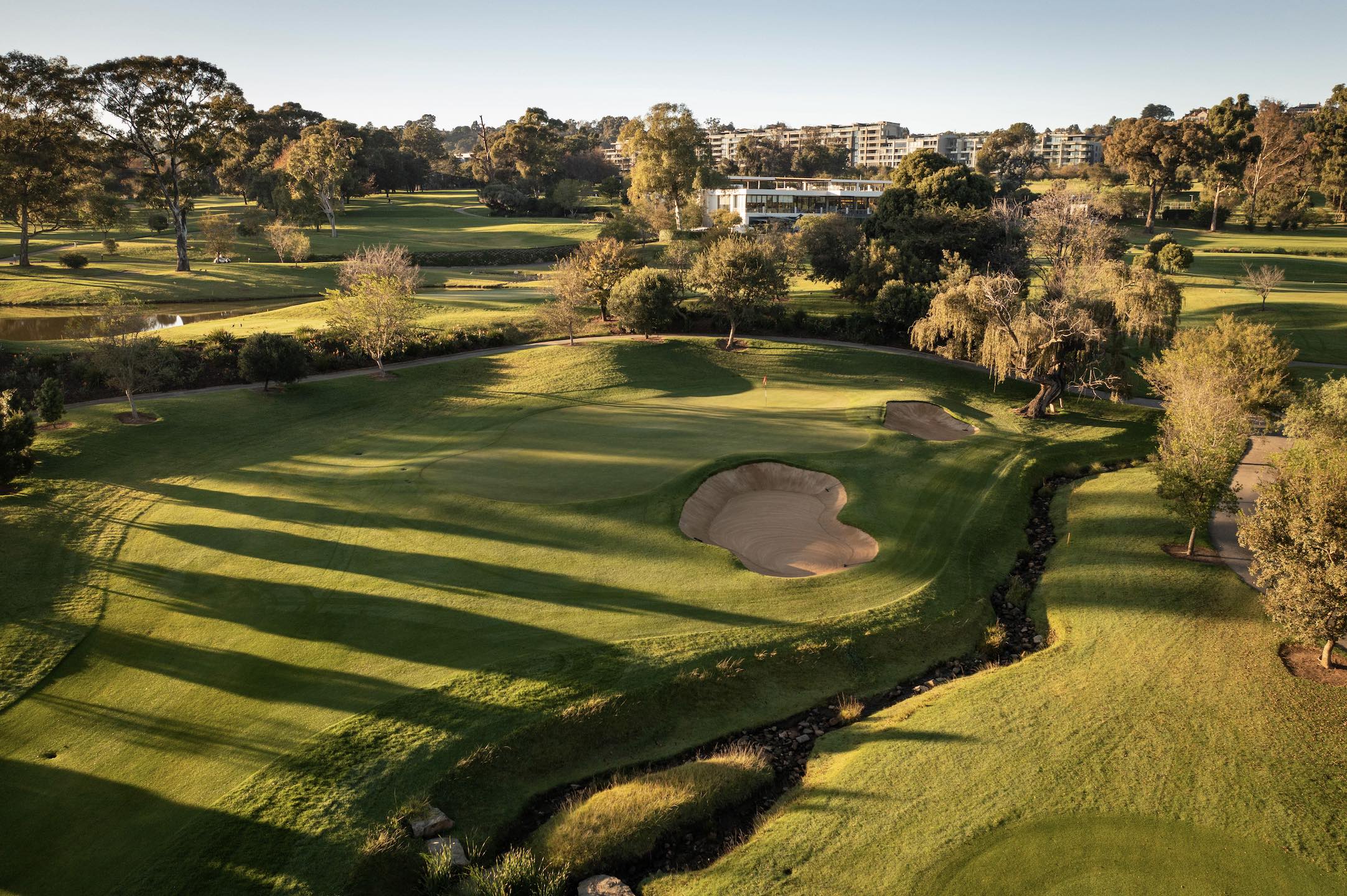
The two par threes on the front nine are diverse and hugely unique.
The 7th is only 155m to an island green. The uniqueness in the hole comes with the massive apartment block encroaching along its entire left flank, making for the feeling of the 16th at the Waste Management Phoenix Open with the crowd watching your every move. Between the water, semi-island green and the feeling of numerous eyes, it can be a nerve-racking hole to navigate.
The 9th, on the other hand, is a similar distance of only 158m playing strongly downhill. Once again, the hole is protected by water running across the front into a large dam right and has a sizeable bunker over the back. The green’s surface is large, running from left to right.
The back nine plays above the clubhouse on the higher-lying ground and starts with a strong par five. The length of the hole with the fairway lined by massive trees and numerous bunkers leading up to one of the smaller greens on the course demands accuracy from tee to green.
The 11th, although a short par four of 358m, has out of bounds along the right side and a large fairway bunker to be avoided off the tee. The closing four holes at Houghton are as challenging as they are beautiful. All with water and ample bunkering, they are strong closing holes.
The par-five 15th is a downhiller with bunkers on the corner of the dogleg as well as greenside. Going for the green in two may not be the most advisable option due to the small green, bunkers left and back, a water hazard front right and a strong drop-off over the back of the green. At 515m with all the greenside protection, the stroke-17 rating on this hole is somewhat misleading.
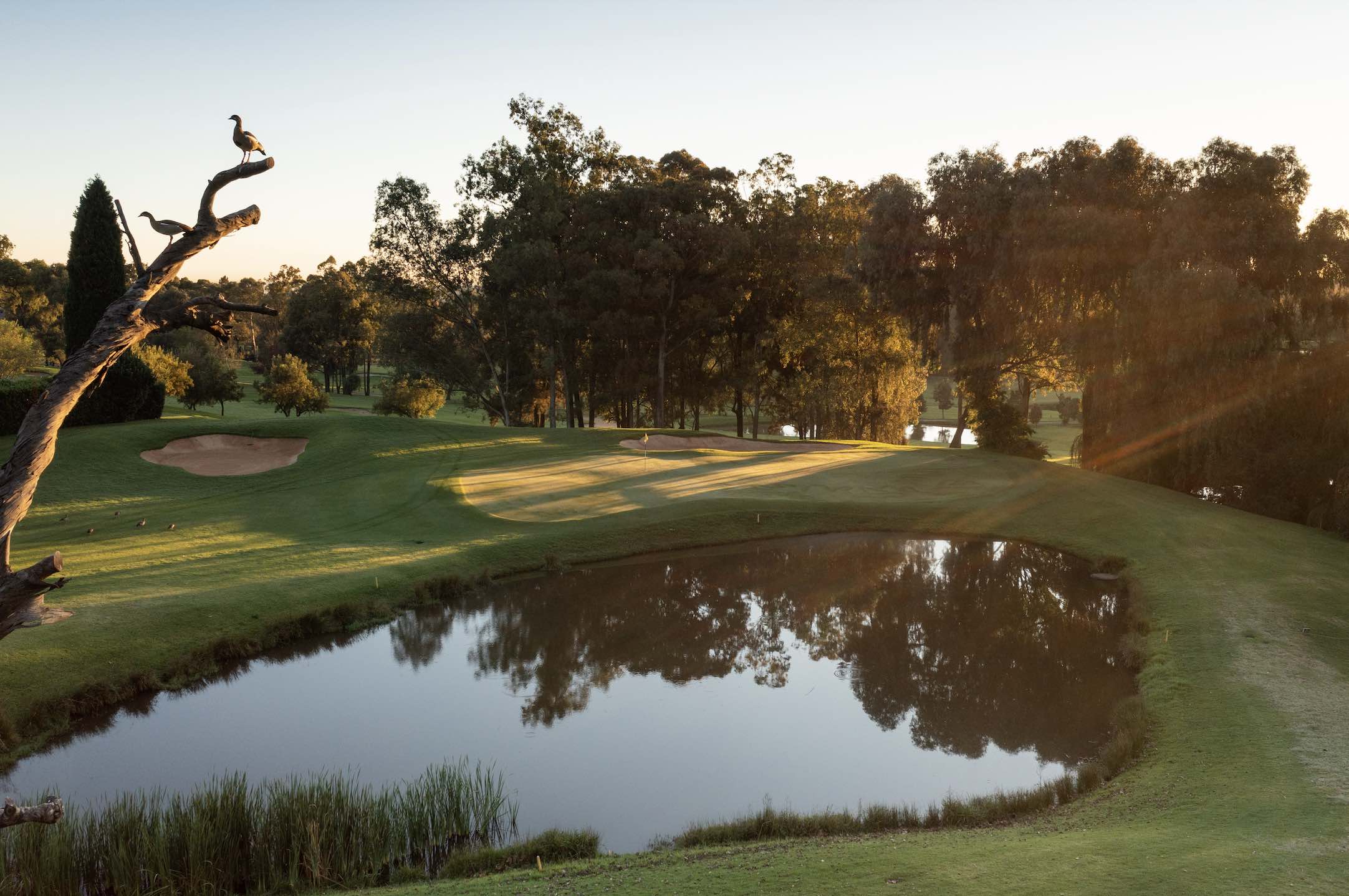
The 16th is a long par three over water to a large green protected by a large bunker for anyone trying to avoid the water by going long. At 183m, although playing slightly downhill, it is the most difficult short hole at Houghton.
The 18th brings you back to the large clubhouse overlooking the green and large water hazard. The hole glides right to left, down from the tee towards the green and at 400m, it is a strong closing hole. A large fairway bunker awaits any pushed drive right.
Greenside, a large water hazard left and two bunkers front left and right await a mis-hit approach. This, however, is not the only defence of the hole as two large eucalyptus trees 50m short of the green also obstruct a direct line to the flag if it is positioned on the front right of the green. Favouring the left side of the fairway from the tee box is therefore advisable.
Returning to the bar area for a well-deserved refresher, the smiling, professional staff are a reminder of the slick operation that is run throughout the entire facility.
Percolating down from the hands-on CEO Robby Richardson, the professionalism is obvious from arrival to departure. It is a course that can be enjoyed through good course management, while the experience of playing Houghton will leave you understanding that the business of golf is evolving, and this is one club at the forefront of that movement.
SIGNATURE HOLE
12th hole, par four, 387m
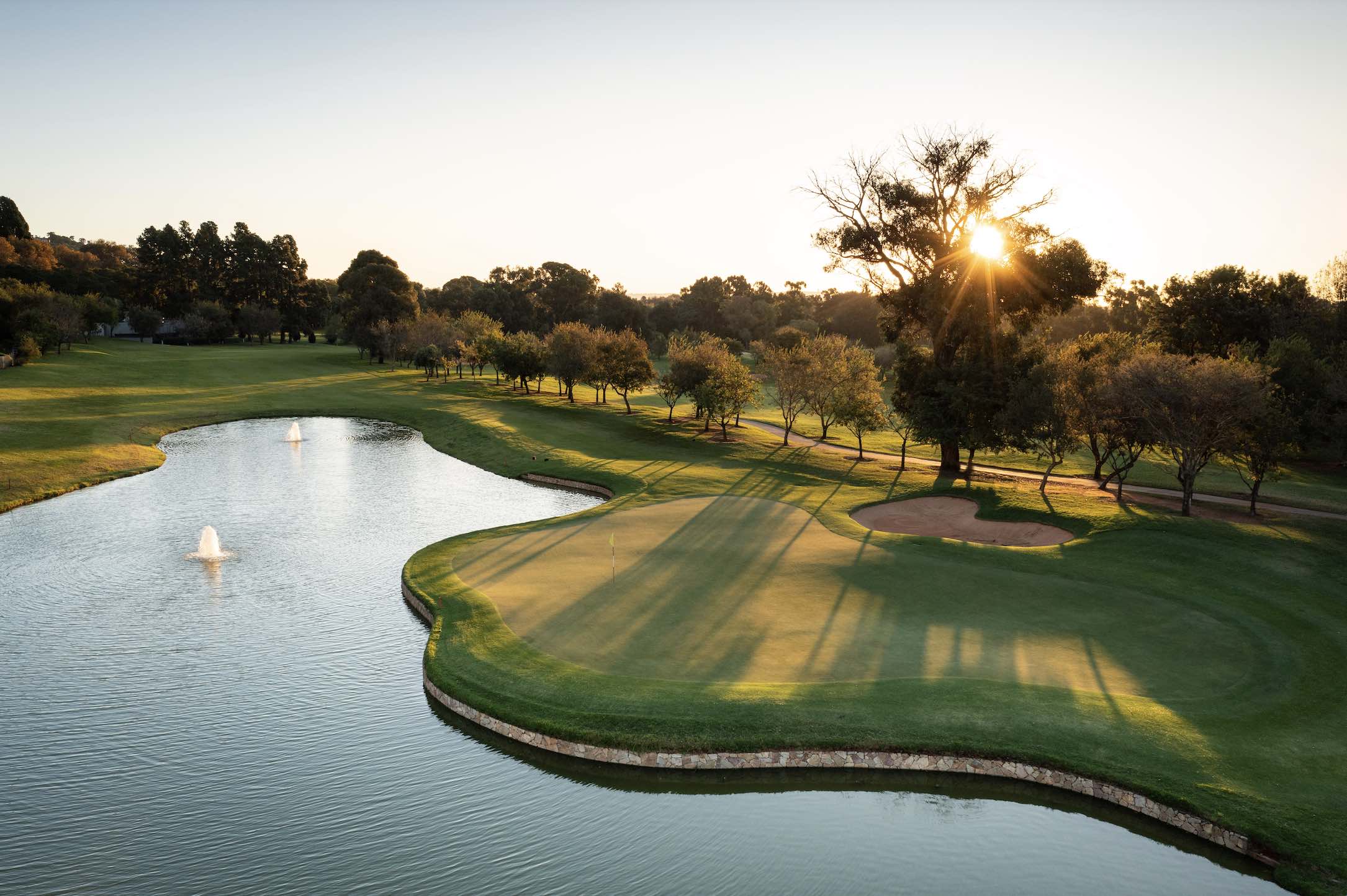
The 12th is a lanky uphill par four with a relatively new island green. At 387m it is a long par four leaving the average golfer a long-iron into the small target.
From the tee, the green is not in view as the hole moves from right to left, with the fairway widening the further up you land. The primary objective from the tee is to find the fairway far enough up to have a direct line to the green. If not, the only option is to lay up short in the hope of making an up and down for par.
The semi-island green is a real knee-knocker of a target with water right and a large bunker left. The green itself, although improved for balls to stop, is still a surface needing your full attention.
The left side slopes strongly from left to right and is the largest target area. The side closest to the water is the smallest, yet the flattest. If you aim for the left of the green, the ball is catapulted right towards the water but aiming slightly right at the flatter area leaves you much less margin for error. Bailing out left leaves you in the bunker playing out towards the water hazard.
Many a member, and rightly so, say it is better to play it as a par five laying up short and then taking your medicine. It is not a hole that can be overpowered.
Once the surface of the green is found, your work is not yet done as the contouring, although subtle, can make for a difficult two-putt. If the flag is towards the front don’t get caught up hunting it as it is a fool’s pin placement. Finding the surface of the green on your approach should be the primary objective.
This stroke one really earns its ranking and anyone walking off the green with a par has done a great job. A stunning hole from tee to green, but also one that has caused many a bogey and more.
GREENFEES
Tues/Wed affiliated special – R440/18 holes, R265/9 holes
Midweek – Juniors R265/18, R155/9
Midweek – Students R380/18, R230/9
Visitors – R430/18, R260/9
GETTING THERE
Directions from north Johannesburg
Take the 11th Avenue offramp, turn right and travel along 11th Avenue for 3km. Turn right at the Houghton Golf Club entrance.
Directions from Sandton
Head south-west toward Glenhove Road/M20, merge onto Central Street/M31 for 1km. Turn left at 11th Avenue/R25, continue to follow R25 for 750m. Take the third right onto Osborn Road for 1.1km. Turn right at the Houghton Golf Club entrance.
Directions from Linksfield Offramp N3
Head west on Linksfield Road 800m. Continue straight onto Club Street, continue to follow M16 (Club Street) left for 5.4km. Turn right into Louis Botha Avenue/M11 for 77m. Take the first left on to 9th Street for 400m. Continue onto Paterson Road for 450m. Turn left onto Grant Avenue for 550m. Go over the turning circle into the clubhouse entrance.
ROAD DISTANCES
Pretoria: 53km
Bloemfontein: 405km
Durban: 573km
Cape Town: 1 405km
ADDRESS
Osborn Road, Lower Houghton, Johannesburg, 2198
CONTACT DETAILS
Pro Shop: 011 728 7337
Email: [email protected]
Web: www.houghton.co.za
– This article first appeared in the July 2023 issue of Compleat Golfer magazine.


